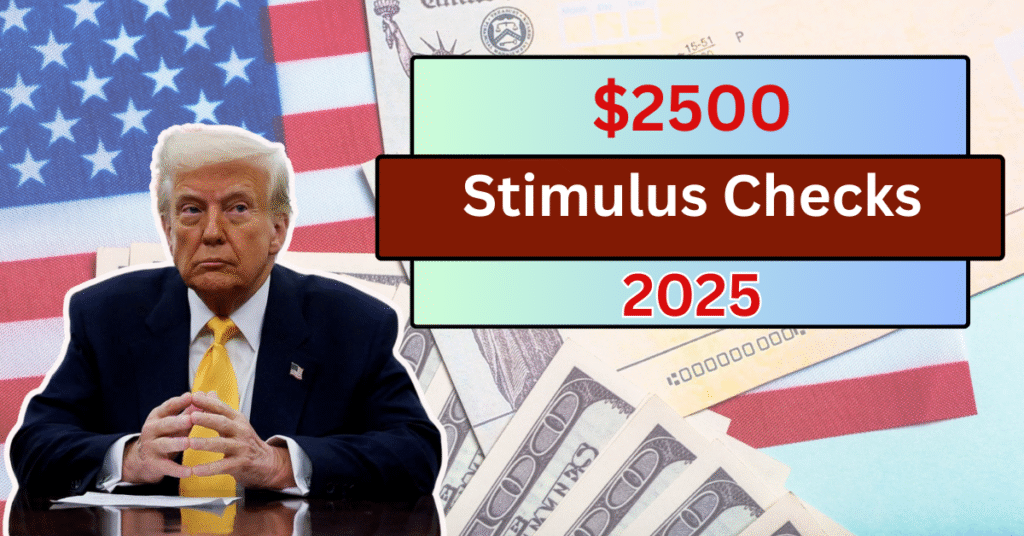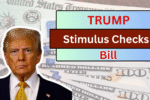The U.S. government is once again offering stimulus checks to eligible citizens in 2025. These $2500 payments are designed to help people manage financial challenges, especially with the ongoing economic pressures many families face. If you’re wondering whether you qualify for this relief, when the payment will arrive, and how much you’ll get, we’ve got all the details covered for you.
IRS $2500 Stimulus Checks 2025 Overview
| Authority | Internal Revenue Service (IRS) |
| Name of Program | DOGE Stimulus Checks |
| Country | USA |
| Amount | $2500 |
| Eligibility | Federal income tax payers |
| Payment Method | Direct deposit, checks |
| Category | Government Aid |
| Official Website | https://www.irs.gov/ |
What are $2500 Stimulus Checks?
The $2500 stimulus checks are part of a new initiative by the U.S. government to support citizens in 2025. This initiative is intended to help individuals and families who are struggling financially, providing them with a financial cushion to cover everyday expenses, such as rent, utilities, and groceries.
These checks aim to relieve rising living costs and financial uncertainty, ensuring that people who are most in need receive immediate assistance.
Who is Eligible for the $2500 Stimulus Check?
The $2500 stimulus payments will be sent to those who meet specific eligibility criteria. Here are some of the main factors that determine who qualifies for the stimulus check:
- Income Level:
To receive the full $2500 payment, your income must fall below a certain threshold. This amount depends on whether you file your taxes as an individual or as a couple. For individuals, the income cap is typically set at $75,000 per year, while couples filing jointly can earn up to $150,000 before the payment is reduced. - Tax Filing Status:
Your filing status matters too. If you are a single filer or married filing separately, your eligibility will depend on the individual income limit. However, joint filers (married couples) can earn more without losing the full benefit of the stimulus. - Dependents:
If you have children or dependents, you might be eligible for a larger payment. The government may offer additional benefits for families, which could increase the amount you receive. However, the specific number of dependents that qualify for additional payments may vary depending on the state. - Social Security and Disability Recipients:
Individuals receiving Social Security benefits or disability payments are also eligible for the stimulus check, provided they meet the income requirements.
How Much Will You Get?
Eligible individuals will receive up to $2500 in stimulus payments. However, the exact amount may vary based on income and dependents. Here’s a breakdown of what to expect:
- Single Filers:
If you’re a single filer with an income under $75,000, you’ll receive the full $2500 payment. For those earning between $75,000 and $100,000, the payment amount will gradually decrease. - Joint Filers:
Married couples filing jointly can earn up to $150,000 and receive the full $2500. However, if their income exceeds $150,000, the amount will reduce until it phases out entirely at a higher income level. - Dependents:
Families with dependents may receive additional amounts, depending on the number of children or dependents they claim. Each eligible dependent might add a fixed amount to the family’s total payment.
When Will the $2500 Stimulus Payments Be Sent?
The timeline for when you can expect to receive your stimulus payment is important to know. Here’s a general overview of the expected timeline:
- First Round of Payments:
The first wave of payments is expected to be distributed in March 2025. If you filed your taxes in 2024 and have provided your banking details, the payment will likely be sent directly to your bank account through direct deposit. - Mail Delivery:
If you have not updated your bank account information with the IRS, you will receive a check through the mail. This could take a bit longer, so it’s crucial to make sure your address and banking details are up to date with the IRS. - Subsequent Payments:
If there are additional payments throughout 2025, they will be sent on a rolling basis, depending on the needs of the economy and any ongoing financial concerns.
How Will the Payment Be Sent?
If you qualify for the stimulus check, there are two primary ways you might receive the payment:
- Direct Deposit:
If you’ve previously provided the IRS with your bank account information, the payment will be directly deposited into your account. This is the fastest and most secure way to receive the money. - Paper Check:
If the IRS does not have your direct deposit information, they will mail you a check. Make sure your address is updated with the IRS to avoid delays. - Direct Express Debit Card:
Some individuals may receive their stimulus payment through a Direct Express debit card, especially if they receive Social Security or Supplemental Security Income (SSI).
What Should You Do If You Don’t Get the Payment?
If you believe you’re eligible but haven’t received your payment, here are some steps to take:
- Check Your Tax Filing Information:
Make sure that your tax information is up to date with the IRS. If you’ve moved or changed bank accounts, you’ll need to update your details to ensure you get the payment. - IRS Tools:
The IRS provides online tools like the “Get My Payment” portal, where you can check the status of your payment and find out when it’s scheduled to arrive. - File a Claim:
If you’re still missing your payment after checking your status, you may be able to file a claim for the stimulus payment. The IRS will guide you through the process to resolve the issue.
What to Do with Your Stimulus Check?
Once you receive your $2500 stimulus check, it’s important to use the money wisely. Here are a few ways to make the most out of your payment:
- Pay Off Debt:
If you have outstanding debts, consider using the payment to pay off high-interest credit cards or loans. This will help reduce your financial burden in the long run. - Emergency Savings:
If you don’t have an emergency savings fund, this is a great opportunity to start one. Having a financial cushion can protect you from unexpected costs, such as medical bills or car repairs. - Invest in Your Future:
Consider using the money to invest in your future by contributing to a retirement account or putting it into a savings plan. - Essential Purchases:
Use the funds to cover essential living expenses like food, rent, or utilities. This will ensure you’re able to maintain your standard of living without falling behind financially.
Conclusion
The $2500 stimulus checks coming in 2025 are designed to offer financial support during tough times. If you meet the eligibility requirements, you’ll likely receive a payment that can be used for essential expenses or saved for future needs. Make sure to keep track of the payment dates, update your tax information, and use the funds wisely to help improve your financial situation.




